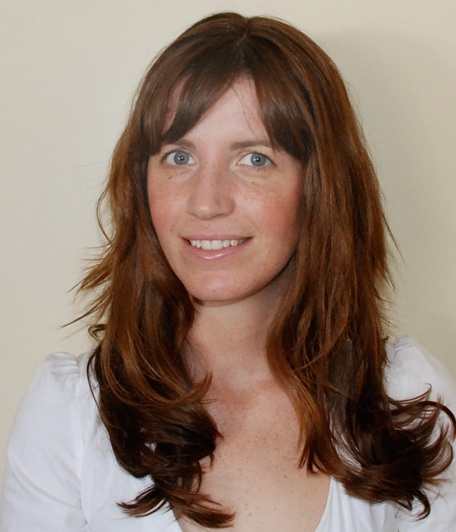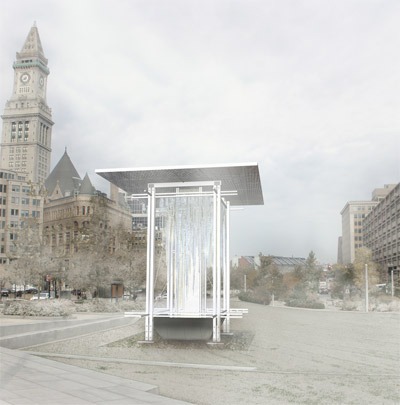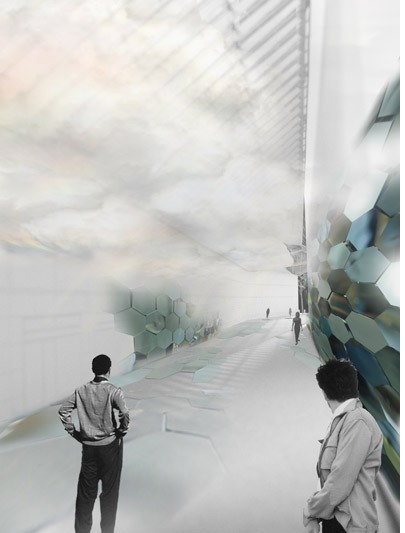
Meet St. Paul’s newest City Artists in Residence
Last week, Public Art Saint Paul (a Knight Arts grantee) announced the addition of two new Saint Paul City Artists in Residence (CAIR) – Amanda Lovelee and Sarah West. Lovelee and West join Marcus Young, who has served as the city’s Artist in Residence since 2006; together they make a collaborative, creative team based in the Public Works department – artists immersed in the processes and systems of city government to integrate arts experiences and aesthetic enhancements in a variety of civic projects and programs.
You can find some general background, on the CAIR program’s stated aims and recent expansion, in my post about the announcement published here Monday. I interviewed both of the city’s new artists in residence about their first days on the job, their aspirations and on-the-ground experiences as part of this grand experiment in “upstream” civic art-making. Both artists have been in their new gigs for just a matter of days. There’s no roadmap for what they’re attempting, so I ask them: How do you begin a job like this?
Sarah West, St. Paul’s City Artist in Residence for Streets and Open Space. Photo by Christopher Field, courtesy of the artist
SARAH WEST (City Artist in Residence for Streets and Open Space): [laughs] Honestly, I don’t know. It’s the strangest job I’ve ever had. We’re still settling in to our cubicles, figuring out where our desks will be and getting used to our new computers. I just sent out my first-ever Outlook meeting invitation!
The thing is, there’s no real path for us to follow, no specific expectations yet about what we should accomplish beyond “do a good job.” Marcus [Young, the original City Artist in Residence and Artistic Director of the expanded program] has been great: He’s been helping Amanda and I navigate the offices, introducing us to the various people he’s worked with, who we’ll be working with as well: engineers, city planners. I can already tell that it’s going to be great experience to work with people who are right in the thick of it.
AMANDA LOVELEE (City Artist in Residence for Temporal Work and Public Engagement): We’ve only been in place for a few days, and there’s still a lot of mystery about what our jobs will entail — but in a good way. I’m basically just excited to get started and wondering: How can I help? Where can my skills be of most use? I love that we’re part of team; as artists, we so often work alone on our projects. This is a rare opportunity to be part of an ongoing collaborative effort and to build projects organically, around what we see and learn from the work already going on in city agencies and departments. We get to come three days a week to City Hall and sit at the table and be engaged in these conversations; we have this amazing chance to make real contributions to how the city operates. We have a chance to be on the inside and part of the process – over and over again. We’re put “upstream,” involved from the planning stages of the city’s projects on through their development and realization. And once we do make something, that work infiltrates throughout the city’s system. When I make something in this context – like a new bench, say – there won’t just be one piece that comes out of it, but 8,000, spread all over the city.
Even better, because this isn’t one-off work, there are lots of opportunities to sit with what we’ve made and refine it over time, based on how it actually functions when used. Artists don’t usually get to live with our work this way; and we certainly don’t usually get to see what we make reiterated again and again. This is on a scale… using a much, much broader brushstroke than I’m used to working with.
Sarah West, “Ice Chimes,” a public art installation on Boston’s Greenway, built in a structure that promotes the growth of icicles which encase suspended pipe chimes and amplify their sounds. Photo courtesy of the artist
SARAH WEST: I think, as the first City Artist in Residence and because he was on his own, Marcus [Young] really had to be brave. He was going in blind to this work, having to do things for the first time, figure out where he fit in from scratch. I feel like Amanda and I have such an advantage: We don’t have nearly as much to prove about the kinds of contributions we, as artists, can make to the city; we have the benefit of excitement generated from all he’s already accomplished in this role and from the successes they’ve already had with efforts like the Sidewalk Poetry Project. We can build on the relationships he’s made. They’ve seen these projects work out well, and the people we’ve met at the City seem excited to see what else we can do together. And why not? It’s a nice feeling to be part of something that’s well received, that’s innovative. It’s fun to work this way.
When I think about what I’m interested in, I’m starting with objects, with places and the question: How do you bring in a sense of emotion and meaning into experiences that are daily, that are common? For example, I take the bus through downtown St. Paul to get to work every day, and I get excited about what could be done there – how we can really bring out the individual character of these spaces that people pass through every day. Marcus has said he’s most excited about our using systems that are already in place, and from there sliding in art – it’s about integration into the process.
“Call and Answer Project” (on site at the Walker Art Center), rooted in the question: How do we continue to form visceral, face-to-face connections in a society where communities are collapsing? This is a project about square dancing, hand holding, connecting by Amanda Lovelee (pictured at right), St. Paul’s City Artist in Residence for Temporal Work and Public Engagement. Photo courtesy of the artist
AMANDA LOVELEE: You should check back in with us, visit our offices in a few months once we’ve settled in! We’re probably going to spend these first couple of months getting to know each other and the people and agencies we’ll be working with in the city. We’re sitting in on a lot of meetings, listening. Mostly, I want to watch and learn right now, figure out how these processes work, how decisions are made, what the systems are already. I want to find out where the needs are, how I can be of help. Generally, I see engagement as a way I can make a contribution. Neighbors so often don’t know each other; those who work for the city, make the plans for neighborhood programs aren’t well known to those who live there. I’d love to dig in, go to meetings and see how we could introduce people to each other, bring residents into the conversation and engage them more directly.
I get the sense that, while each of us, as City Artists in Residence, will be assigned different projects to help with and ultimately have some self-initiated things we’ll be working on, we three will also be working together to make things. I can already tell, we’re such a complementary team. What an opportunity we have, to work in this way and to have a chance to contribute on such a scale, and with this level of support. We don’t have to hustle up individual grants for each project, we can just get to work, focusing on using our skills to help with what needs doing and on making interesting things. This really is a dream job.
Sarah West’s proposal for a “Cloud Timepiece” installation at Rockefeller Center. The “cloud” builds and fades away each hour and is reflected in the layered mirrors of the passageway below. Photo courtesy of the artist
SARAH WEST: I think of this opportunity as, itself, every day, an art experiment. I don’t think there’s really a wrong answer to what we’re going to do in these roles. I figure my task, right now, is to be open and friendly and thoughtful. And there’s a lot of thinking to do: What will I do with this freedom? What can I contribute? It just feels like such an adventure.
Marcus has been so careful about how he’s crafted our initial roles, how he’s built this little team – from the way we’re introduced around to various departments to how our titles and program are described. And he’s also given a lot of thought to how we’ll work together. We’re being allowed time to get to know each other’s strengths and ways of working, to see how we can complement each other and work collaboratively. That’s really special. I’ve never worked in a job where so much care has been taken, where we’re given such support to succeed.
Recent Content
-
Artsarticle ·
-
Artsarticle ·
-
Artsarticle ·




